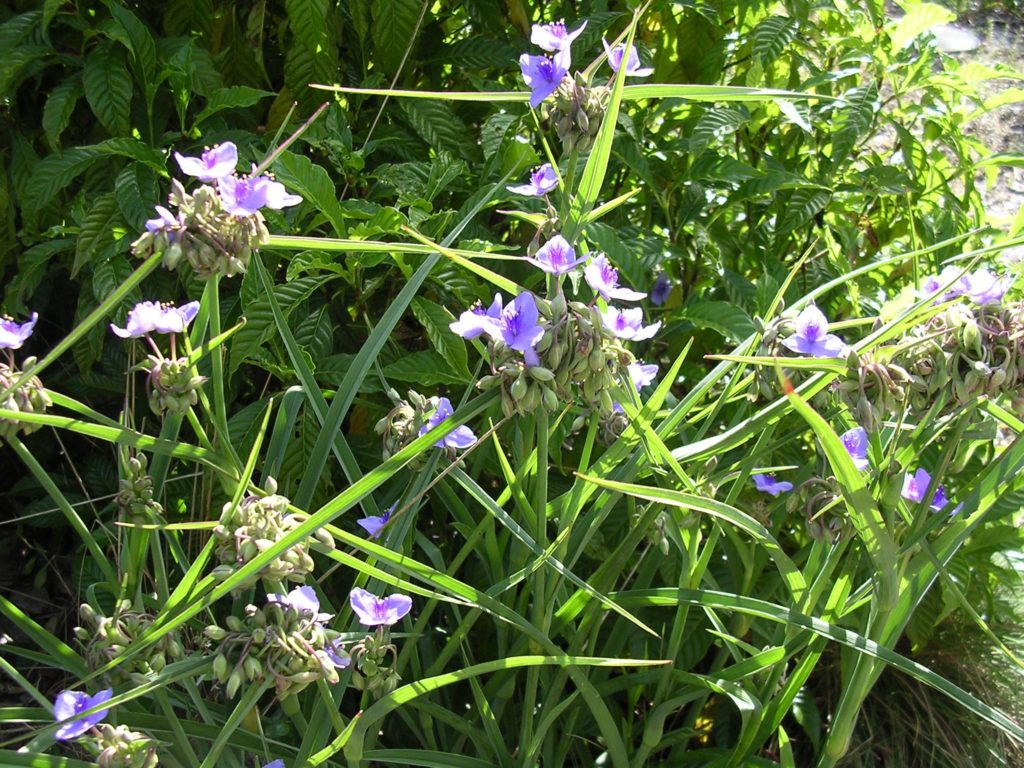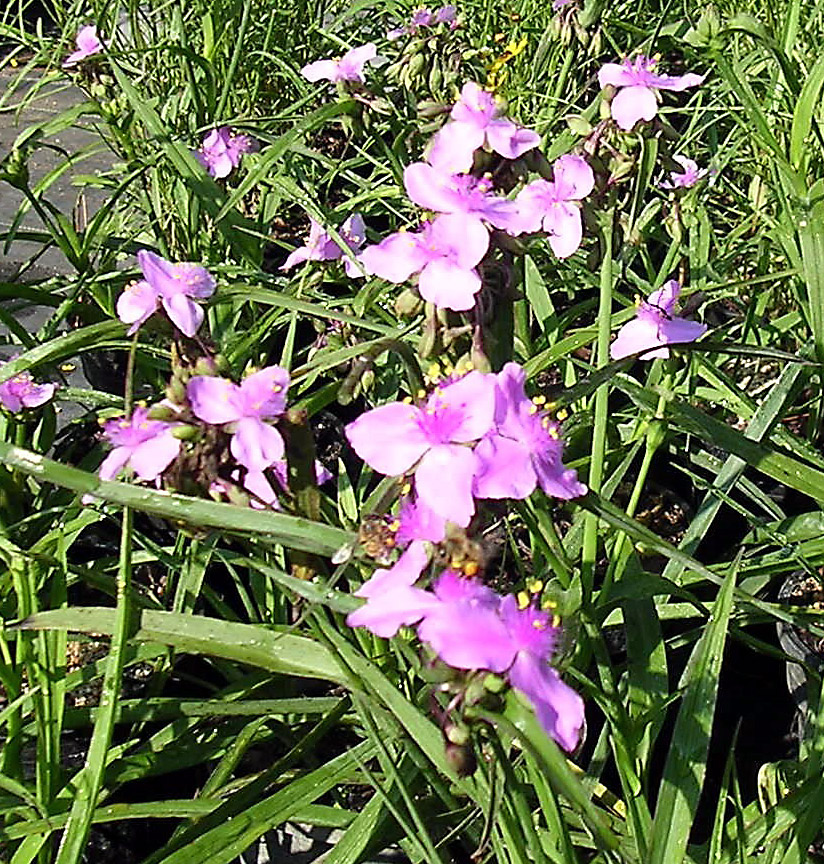

Spiderwort
Tradescantia ohiensis
Ohio Spiderwort can be found from Maine to Florida and west to Texas. It is the most widely distributed spiderwort and the most likely to be found in the eastern U.S.
It forms clumps of blue green leaves that stay below two feet tall. The flower stalks rise up to about two feet and produce clusters of blue flowers. Pink and purple are often produced and very rarely white.
This is a tough plant that takes moist to sugar sand soils. It also grows on the back side of the dune starting around Cocoa Beach. Look for it also where 528 goes west of Cape Canaveral over the marshes and on the old white sand scrub along U.S.1.
Spiderwort will flower from February to late June. You may want to cut the old seed heads off and place where you want seedlings to come up or just lay them near the original plant to extend it.
In fertile moist soil the plant will produce a nice groundcover of leaves all year and may flower a bit more. In dry soil, the plant may disappear for a couple of months, yet usually returns from the root mass. Watch for tiny succulent seedlings too.
Once established, Ohio Spiderwort is hard to remove. Roundup does little damage leaving you to hand pulling. Do not mow the old seed stalks or you will have this plant all over the place.
Bumble and other bees do the pollination, so don’t expect butterflies on this plant. We have seen painted buntings eat the seeds.
The leaves have slimy sap yet cook up into a nice stir fry. The pink, white and blue flowers can be used for a Fourth of July salad. Almost all green plants will make your dog throw up, but this one is not poisonous.
It is in the Commelinaceae family. Some of the exotic members of this family are poisonous, but the red leaves of Oyster Plant and Wandering Episcopalian plant are obvious compared to the green, grassy leaves of the Spiderwort.
Use Spiderwort where you need a low clumping plant. Since it has its ups and downs, I mix it with other plants and don’t use it as a solid border in the front.
In a moist site, Prairie Iris, Black Eyed Susan, Tickseed and Spiderwort go well together. It grows naturally with Seaside Goldernrod, Red Salvia, Beach Verbena, Dune Sunflower, Spiderlily, Coontie, Sea Oats, Railroad Vine, Southern Beebalm, Beach Croton, Gaillardia and Blue Curls.
Full sun is best, yet this can be grown under the shade of Live Oak and other trees that allow some light to get thru. When driving along Merritt Island, look for the blue flowers under oak trees in roadside yards.
Spiderwort is one of the spring wildflowers that will liven your yard. The flowers only last until 1 pm but are worth the early retirement. You can even add them to your vegetable garden for a native green. This is a must for people wanting to attract bees.
For info on the Ohio Spiderwort click here, and info on the related Virginia Spiderwort, Click here. And here’s a great article about its past and edibility, Click here.